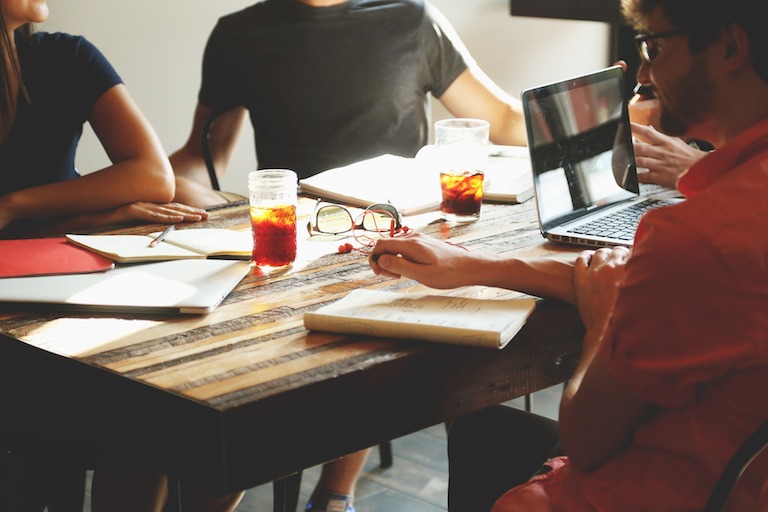Answer these questions honestly:How do you feel about telemarketers? What about promotional emails? On a scale of 1 to 10, how would you rate most television commercials? If you’re like most consumers, you not only said, “don’t like ‘em” — you might have even gotten mad. Telemarketers are the bane of our existence, right? That’s […]
-
Answer these questions honestly:
How do you feel about telemarketers? What about promotional emails? On a scale of 1 to 10, how would you rate most television commercials?
-
If you’re like most consumers, you not only said, “don’t like ‘em” — you might have even gotten mad. Telemarketers are the bane of our existence, right? That’s why more than 45% mobile users in India have registered on a “do not call” list. And most people now fast forward through TV ads. What about promotional emails? Well, no one likes their inbox cluttered with ads for products they don’t care about and don’t want.
So, Why are there still telemarketers and promotional emails, and TV Ads?
The simple answer is that they still work. According to
John Pritchett writing about telemarketing for LinkedIn, for example, “Done properly, picking up the telephone is still one of the most effective tools for lead generation and demand creation.” And, although many consumers find a way around television spots, many others still watch them, and still make purchases based on their content.
As for promotional emails, even
Hubspot (the leader of inbound marketing) agrees they’re indispensable to a comprehensive marketing strategy, and that consumers respond to them—for example, 66% of consumers report that they’ve bought products based on an email marketing message.
When Is It OK to Interrupt Someone?
People don’t like it when you interrupt them, right?
Well, it depends. If you’re telling a friend that you’re about to pay 15 Lakhs for a new car and he interrupts with, “Wait — I know a dealer who’ll give you that car for 13 Lakhs” — will you get mad, or will you thank him?
Interruptions are OK when they help people, give them smart advice or steer them in the right direction.
What Is Interruption Marketing?
Interruption marketing gets its name from the fact that it interrupts whatever someone is currently doing to grab his attention.
Tech Target defines interruption marketing this way:
“Interrupt marketing, sometimes referred to as interruption marketing, is the traditional model of product promotion, in which people have to stop what they’re doing to pay attention to the marketing message or deal with it in some other way.”
Examples of interruption marketing include telemarketing calls, mail campaigns, email campaigns, television and radio ads, interstitial and transitional online ads, and “preroll ads” that play before video content.
Whether or not these traditional marketing strategies work for your business depends on how you deploy them.
So what’s the Secret?
The trick to successfully deploying interruption marketing is to understand the fine line that separates curiosity and nuisance. If a telemarketer calls with a pitch on refinancing your mortgage, you’re annoyed — unless you happen to be thinking about refinancing your mortgage, in which case you might want to know more. A promotional email for landscaping services is a nuisance for many consumers — except those who are searching for top landscaping services.
Said differently, the secret to successful interruption marketing is
understand your audience — what they want and how they want you to communicate with them.
Here are 4 strategies to make interruption marketing work for your business:
- 1. Target the right people: when you send a product email to a prospective customer who has zero interest in that product, you don’t just lose that sale—you also create mistrust. That customer probably won’t pay attention to subsequent promotional emails, even when they’re about products he does want. You need to segment your email list based on who your customers are, what they want, and where they are in the buying cycle.
- 2. Don’t make customers jump through a lot of hoops: whatever your call to action is, you need to make it easy as possible for customers to do. If you send an email with a link to an online form on your website, don’t ask for too much information, especially if it’s a new customer. Put yourself in your customer’s shoes—how much action would be too much for you to take?
- 3. Appeal to their pain points: consumers are motivated to buy products and services that help them solve problems. You need to clearly understand what that problem is, how your product solves it, and how to most persuasively make that case to prospects. Generally, that means stating the problem upfront (it’s good to do this in the form of a question, as in, “Are you still trying to get rid of that annoying belly fat?”) to pique curiosity, then answering the question with your solution to the problem.
- 4. Ask for their permission: you can’t bully people into buying your products — when you push hard, the natural tendency is for them to push back. You can make your statement of a given consumer problem as straightforwardly as you want, but you still need to ask for permission to make your case. If what you want, for example, is someone’s contact information, offer them something they want (like a discount or useful content) as an incentive. And, when it comes to emails, always (ALWAYS) be sure recipients have opted in, and always give them an opportunity to unsubscribe.
Conclusion
To drive sales and grow your business, you need to identify the weaknesses in your sales process — whether it’s generating leads or closing sales — and then craft a
strategy to eliminate it. That means understanding your audience and leveraging the right technology to put your plan into action. To learn more about the ways our technology services can help you achieve your business goals,
contact us today.

































